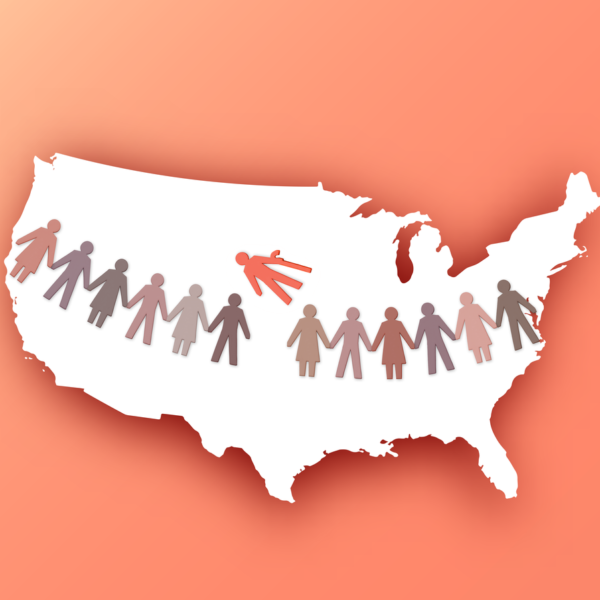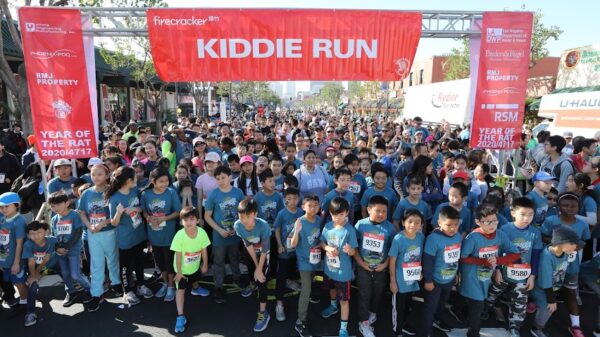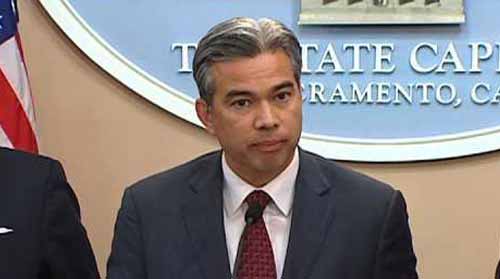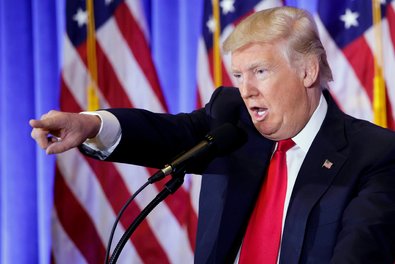In a continuous endeavor to safeguard the healthcare benefits of its residents, the state of California has embarked on an exceptional initiative aimed at reevaluating the eligibility of over 15 million Medi-Cal members from June 2023 to May 2024. This ambitious undertaking, coined the “Great Unwinding,” is part of a nationwide process that impacts Medicare enrollees. California’s steadfast commitment to ensuring uninterrupted coverage for all eligible residents has united representatives from diverse sectors to exchange insights and strategies.
Representatives from the California Department of Health Care Services and Covered California recently engaged in a briefing organized by Ethnic Media Services (EMS). The goal was to update reporters on the measures in place to ensure the preservation of coverage for eligible individuals. The primary focus of these efforts is on safeguarding vulnerable populations, including Black, Latino, Asian American, and Pacific Islander (AAPI), and Native American enrollees, particularly older adults and children.
The briefing commenced with perspectives from Yingjia Huang, Deputy Director of Health Care Benefits and Eligibility at the Department of Health Care Services. Huang underlined the significance of this initiative, given its profound impact on the lives of Medi-Cal enrollees. The department has introduced an interactive dashboard offering real-time updates on the redetermination process, fostering transparency and enabling the public to track progress.
During the initial month of disenrollments in June, 21% of Medi-Cal members subject to redetermination were removed from the program, amounting to over 225,000 individuals. Notably, a significant portion of these disenrollments resulted from members failing to return their renewal packets, which were dispatched in yellow envelopes. However, the department emphasized that there is a 90-day window from June to September 30th for those who were disenrolled due to non-return of packets to seek reinstatement into the program.
In collaboration with Covered California, the state has devised a seamless transition process for members no longer eligible for Medi-Cal due to income changes. This endeavor aims to streamline the transition to other coverage programs, including Covered California while minimizing administrative complexities.
To support enrollees throughout this process, the state has enacted several pivotal measures:
Health Enrollment Navigators: Over 150 community-based organizations are receiving funding to deploy health enrollment navigators across the state. These navigators facilitate the completion of redetermination paperwork and address inquiries, ensuring those affected by the process have access to assistance.
Managed Care Plans: Managed care plans associated with Medi-Cal are actively communicating with members through calls and postcards to remind them about the significance of the redetermination process and renewal dates.
The speakers emphasized the community’s integral role and engagement in this endeavor. Community-based organizations and navigators possess deep ties within their respective communities, offering a comprehensive understanding of unique needs and challenges. This insight is pivotal in ensuring individuals are well-informed and equipped to navigate the redetermination process.
Although the initial month’s data demonstrated that a majority of members retained their coverage, officials acknowledge that substantial work remains. The collaborative alliance among the state agency, Covered California, and community partners remains resolute in upholding enrollment and disseminating information concerning the redetermination process.
As the “Great Unwinding” progresses, California’s dedication to safeguarding healthcare benefits for its residents remains evident. The ongoing initiatives to communicate, assist, and facilitate transitions exemplify a commitment to ensuring eligible individuals receive necessary care, thus contributing to the overall health and well-being of the state’s populace.
Jessica Altman, CEO of Covered California, conveyed gratitude to Ethnic Media Services for hosting a pivotal briefing on an issue that will impact over 15 million Californians in the coming year. Altman acknowledged the event’s significance and the collaborative effort involving partners from diverse organizations.
Altman underscored Covered California’s vital role in supporting Californians throughout this process. She highlighted California’s unique capacity to aid consumers during the nationwide “Great Unwinding,” showcasing the state’s achievement in significantly reducing the uninsured rate from 17.5% to 7.5%, a testament to collective endeavors.
Regarding the transition from Medi-Cal to Covered California, Altman elucidated that when an individual is redetermined as ineligible for Medi-Cal coverage, the information is relayed to Covered California. The organization selects an appropriate plan with optimal value and financial assistance for the consumer. While consumers can retain this plan, they also possess the option to choose another in alignment with their preferences.
Altman highlighted innovations such as Senate Bill 260 and Covered California to Medi-Cal enrollment program, transforming how Californians transition between coverage types. These efforts aim to establish smoother transitions, ensuring individuals maintain healthcare coverage even after being redetermined ineligible for Medi-Cal. This support extends beyond the unwinding phase, providing ongoing assistance to Californians.
Acknowledging potential confusion during the transition, particularly for those unfamiliar with their options, Altman outlined Covered California’s proactive steps to disseminate information in multiple languages. The organization has initiated media campaigns in Spanish, Mandarin, Cantonese, Korean, and Vietnamese, employing television, radio, digital, and social media advertisements. Informative videos have been crafted to guide consumers through account creation, coverage option review, and enrollment via Covered California.
Altman expressed gratitude for ethnic media outlets playing a pivotal role in reaching diverse communities. She underscored the importance of providing accurate information and assistance to as many Californians as possible, regardless of language or communication preference. Altman’s statements underscored the organization’s unwavering commitment to ensuring access to reliable information and assistance throughout the transition process, ultimately sustaining coverage for all eligible Californians.
Louise McCarthy, CEO of the Community Clinic Association of LA County, introduced herself as a representative of a coalition comprising nonprofit private community health centers across Los Angeles County. These centers collectively serve a staggering 1.89 million individuals annually, with 64% relying on Medi-Cal coverage.
McCarthy acknowledged the distinct position of Los Angeles County, accounting for approximately a third of California’s metrics. She likened LA to a “canary in the coal mine,” as its impact on statewide data is substantial. With 4.4 million Medi-Cal enrollees in the county, she emphasized the significance of maintaining coverage for these individuals.
Highlighting the role of community health centers, McCarthy emphasized their pivotal role in helping patients maintain continuous coverage, thereby accessing entitled services and referrals for specialized care. The community-oriented nature of these centers positions them as integral to ensuring seamless transitions during the redetermination process.
McCarthy underlined the pivotal role of counties in California’s success in expanding and maintaining coverage, as they serve as gateways to enrollment for various programs, including Medi-Cal. The resumption of renewals and impending eligibility expansions will test the capacity of county departments and their partners, such as health centers, to provide essential support.
McCarthy underscored the significance of resources—human, financial, and technical—in supporting these endeavors. Health centers actively assist clients upon receiving the yellow renewal packet. Enrollers at these centers facilitate paperwork completion and navigate benefits systems, often liaising with county officials alongside their clients to streamline the process.
Acknowledging the support provided by health enrollment navigators funded by the state, McCarthy noted that while community-based organizations are inherently motivated to assist their patients, the state’s financial backing enhances their efforts.
She encouraged readers, particularly those encountering language barriers or bureaucratic challenges, to seek assistance from local community health centers. These centers are adept at offering language support and navigating bureaucratic intricacies.
In summary, Louise McCarthy’s presentation highlighted the indispensable role of community health centers in ensuring individuals maintain coverage during the redetermination process. She underscored their commitment to helping patients access entitled services and offering essential guidance in navigating the enrollment process.
Following previous speakers, Rosario Arreola Pro, COO at the California Rural Indian Health Board, Inc., took the floor. She expressed gratitude for the opportunity to participate in the panel and commenced by introducing the California Rural Indian Health Board (CRIHB). This statewide tribal health association represents 19 tribal clinics and 59 tribes across California.
Arreola Pro emphasized the significance of medical redetermination for American Indians and tribal health programs. Despite federal responsibilities, tribal health programs receive less than 60% of the necessary funds to provide care for tribes. Consequently, reimbursement through the Medi-Cal program is indispensable to secure funding for services like primary care, dental care, mental health services, and vital medications. Between 30% and 60% of patients served by tribal clinics are Medi-Cal beneficiaries.
Arreola Pro highlighted that tribal and urban Indian clinics share similar concerns with other community clinics, primarily avoiding lapses in coverage. Many individuals depend on Medi-Cal to access various healthcare services, encompassing primary care, dental care, specialty care, and emergency care.
As the redetermination process unfolds, Arreola Pro estimated that one in five Medi-Cal beneficiaries could lose eligibility due to lapses in eligibility or shifts in unemployment. Many of these individuals haven’t had to file for several years, rendering it crucial to update contact information to prevent missing essential correspondence.
Arreola Pro elaborated on several measures in place to ensure continuous coverage for Medi-Cal beneficiaries. The California Rural Indian Health Board collaborated with partners to maintain telephone visits as a reimbursable service, particularly for clinics in remote areas with unreliable internet service.
The organization has also engaged clinic registration staff, community health workers, and transporters in rural and remote communities to acquire the necessary documents for applying to California programs.
Arreola Pro highlighted the multi-pronged approach adopted to secure uninterrupted care, including outreach through social media, health fairs, phone calls, and community health workers. The emphasis is on raising awareness, providing aid, and delivering friendly reminders to patients, ensuring they possess the information and support required to sustain their coverage.
In summary, Rosario Arreola Pro’s speech underscored the pivotal role of the California Rural Indian Health Board in advocating for continuous coverage for American Indian and tribal populations amid the challenging redetermination process. The organization employs an array of strategies to guarantee that those relying on Medi-Cal can access vital healthcare services without disruption.
Dr. Seciah Aquino, Executive Director of the Latino Coalition for a Healthy California, followed with her address. She commenced by highlighting the significance of collaboration between government bodies, community-based organizations, clinics, media, and all partners in the endeavor to ensure community safety and well-being.
Dr. Aquino illuminated the critical role played by the Latino Coalition for a Healthy California, representing over 40% of California’s population, which accounts for 16 million Latinos. She expressed appreciation for the transparency extended by the California Department of Health Care Services (DHCS), which unveiled a dashboard displaying pertinent data related to the redetermination process. According to this data, 53.2% of those disenrolled were Latinos, a figure underscoring the scale of the issue.
She emphasized the need to address the concerningly high number of 117,849 Latinos losing their enrollment, highlighting the ongoing challenges faced by Latinos and other communities of color in the aftermath of the pandemic. Dr. Aquino noted that the Latino community is still recuperating from the pandemic’s health and economic impact, making Medi-Cal indispensable for safety, opportunity, and recovery.
Dr. Aquino shared that communication has been pivotal in recent months, employing methods such as mail, text messages, and email to disseminate information. She noted that there is still fear and confusion within the community regarding logistics, and mentioned the Latino Coalition’s ongoing listening tour across California to comprehend how community members are receiving and comprehending the information.
She stressed the necessity for communication in multiple languages to cater to the diverse population of Latinos, encompassing indigenous Mesoamerican communities. Dr. Aquino emphasized the need to diversify language access to ensure all community members receive critical information.
She noted that while mail-based forms have proven useful for those acquainted with the process, text messages play a crucial role in notifying community members of changes. However, follow-up information is often lacking. The Latino Coalition’s efforts revolve around educating community members about the process and logistics in their language.
Dr. Aquino also underscored the media’s importance in disseminating information, including specific logistics such as contact details for navigators providing assistance. She highlighted the necessity for personalized support, especially for individuals who haven’t received or located their yellow envelopes.
She voiced concerns about language access and data disaggregation for Indigenous communities, urging a deeper comprehension of what “Latinx” entails and the inclusion of specific numbers for different Indigenous American communities. She called for systemic solutions beyond outreach efforts to address ongoing enrollment challenges and emphasized that investing in health translates to a healthier economy.
In conclusion, Dr. Aquino conveyed her determination to tackle the challenges facing the Latino community, underlining the significance of safeguarding community safety and health through collaborative efforts and systemic solutions.
In conclusion, California’s resolute commitment to safeguarding healthcare benefits for its residents shines brightly through its extensive efforts to ensure the coverage of over 15.5 million Medi-Cal enrollees. The ongoing “Great Unwinding” initiative underscores the state’s dedication to transparently reevaluate eligibility and support vulnerable populations, including ethnic minorities and indigenous communities.
Through collaborative efforts involving government entities, community-based organizations, clinics, and media, California has embarked on a journey to maintain continuity in healthcare coverage. The insightful contributions of speakers from various sectors, such as the California Department of Health Care Services, Covered California, community health centers, and tribal health associations, underscore the unity required to address the challenges inherent in the redetermination process.
As communication efforts extend to diverse languages and mediums, including mail, text messages, and multimedia campaigns, the state is actively ensuring that every eligible individual receives the information and assistance needed to navigate this complex transition. The role of community health centers, enrollers, and health enrollment navigators is vital in providing personalized support and bridging any gaps in understanding, thereby contributing to the overall success of the endeavor.
As California’s “Great Unwinding” continues, it signifies not just a process of redetermination, but a testament to the state’s unwavering commitment to the well-being of its residents. By maintaining a relentless focus on access to quality healthcare, regardless of socio-economic factors or linguistic barriers, California paves the way for a healthier, more equitable future. The collective determination of stakeholders, coupled with innovative strategies and persistent communication, ensures that eligible individuals can continue to receive the care they need, ultimately contributing to the holistic health and prosperity of California’s diverse population.
#MediCalCoverage #CaliforniaHealthcare #HealthcareBenefits #GreatUnwinding #ContinuousCoverage #RedeterminationProcess #HealthEnrollment #CoveredCalifornia #CommunityHealth #EthnicMedia #VulnerablePopulations #HealthcareAccess #HealthcareCommunication #EligibleEnrollees #IndigenousHealth #TransparencyInEligibility #HealthyCalifornia #MediCalEnrollees #HealthEquity #EnrollmentSupport #MediCalTransition









